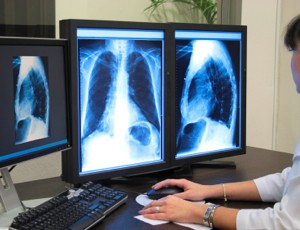Ultrasound-guided PIV insertion in pediatric sickle cell anemia patients

“We found that while there was a small amount of time gained by using ultrasound-guided PIV insertion, patient and parent satisfaction was significantly improved” Mahon et al (2020).
Optimal fill volume for blood culture bottles – Full Text

“We investigated whether an educational intervention could optimize filling volume of blood culture bottles without negatively affecting microbiology testing” Steiner et al (2020).
Safety of intravenous iron following infusion reactions

“To evaluate the safety of recommencing an infusion or subsequent re-challenge following an infusion reaction to intravenous iron” Stojanovic et al (2020).
Intravenous lipid emulsion in children on home parenteral nutrition

“CLE was safe and well-tolerated in stable children on HPN at one year, but further studies are needed in this population to appreciate long-term outcomes” Raphael et al (2020).
Linezolid pharmacokinetics in critically-ill obese patients

“This study adds to accumulating evidence that standard linezolid doses may not be adequate for all patients” Blackman et al (2020).
Central-venous catheter site and CLABSI risk – Full Text

“FEM site of catheter insertion was associated with a higher rate of bloodstream infection and catheters’ colonization compared to IJ and SC sites” Pitiriga et aL (2020).
Blood plasma reduces adhesion of Staphylococcus aureus on CVC

“These findings indicate that the initial adhesion capacity of S. aureus to CVC tubing is markedly reduced, once the CVC is inserted into the vein” Gunaratnam et al (2020).
Protocol for peripheral intravenous norepinephrine

“Our results suggest that norepinephrine is safe to administer through a PIV at low doses for less than 24 hours using a protocol” Cape et al (2020).
PICC thrombosis in patients with lung cancer

“To determine the incidence and risk factors associated with peripherally inserted central catheter-related thrombosis (PICC-RT) in patients with lung cancer” Chen et al (2020).
Trainee follow-up and phlebotomy competency

“In order to perform phlebotomy correctly, apart from theoretical education, a close follow-up is necessary too” Aykal et al (2020).
Experience and success rates of subclavian vein catheterization

“The aim of this study was to examine the influence of the puncture experience on the success rate and mechanical complications” Schulz et al (2020).
Left-sided superior vena cava and central line tip location – Full Text

“Persistent left-sided superior vena cava is a rare congenital venous malformation” Mancera et al (2020).
Factors associated with successful OPAT completion – Full Text

“This study demonstrated the viability of OPAT in elderly patients with pulmonary or urinary tract infections” Salles et al (2020).
Loading dose and efficacy of continuous infusion of beta-lactams

“CEIs with loading-dose treatment may significantly improve the clinical outcomes in critically ill sepsis or septic shock patients” Wu et al (2020).
Intravenous infusion bottle fill level monitoring

“We propose a dataset to investigate the relationship between the fill level of bottles and tiny machine learning algorithms” Pau et al (2020).
Adherence to the central line bundles in intensive care

“Despite the promotion of central line bundle policies, wide variability exists in compliance and infection rates in intensive care units” Burke et al (2020).
Methods of inserting totally implantable ports – Full Text

“The aim of this study was to testify on the efficacy and safety of the subclavian puncture without ultrasound guidance in comparison with the classical infraclavicular approach (ICA)” Majbar et al (2020).
Use of inotropics by peripheral IV catheter in pediatric shock

“The aim of this study was to report local adverse effects associated with inotropic drug administration through a PVL at a pediatric emergency department setting in the first hour of treatment of septic shock” Kohn-Loncarica et al (2020).
Reducing the risk of needlestick injuries – Full Text

“The most important organisms that can be acquired after a needlestick injury include HIV, hepatitis B and hepatitis C” King et al (2020).
Infusion site reactions with fosaprepitant administration

“About 3% (n = 460 of 15,667) of patients who received fosaprepitant had documentation for suspected extravasation” Segna et al (2020).
Comparison of ED and inpatient placed peripheral IV catheters

“PIVCs have similar poor survival rates regardless of ED versus IP location of the insertion” Kache et al (2020).
What is a subclavian central venous catheter – Full Text

“Subclavian catheters can be temporary or permanent, simple, tunneled, or connected to a port under the skin” Deere et al (2020).
Methods of implantable port tip location

“To explore whether transesophageal echocardiography (TEE) can be used to accurately locate the TIVAP catheter tip” Yang et al (2020).
Central catheter-related intracardiac thrombus – Full Text

“In patients with catheter-related intracardiac thrombus, anticoagulation should be continued for at least 3 months or until the catheter is removed” Nair and Maroo (2020).
Impact of in-line filtration during etoposide infusions

Abstract: The objective of this study was to describe hypersensitivity reactions with and without the use of in-line filters during intravenous etoposide therapy in pediatric oncology patients. This was a retrospective review of all patients treated in the Division of Oncology/Hematology/Bone Marrow Transplant at British Columbia Children’s Hospital with intravenous etoposide between December 1, 2013 […]
UEDVT link to PICC size and blood vessel diameter

“Different venous characteristics can lead to different blood flow rates, which can affect the incidence of thrombosis” Wang et al (2020).
Evidence based central venous catheter care – Full Text

“Unfortunately, the presence of indwelling CVCs increases the risk of the formation of thrombi, emboli, and infection than patients with peripheral catheters by 200%” Ball and Singh (2020).
Implantable port associated doxorubicin extravasation

“Catheter misplacement should be suspected in any patient presenting with post procedural chest pain and should trigger a thorough evaluation prior to any chemotherapy administration” Kazakova et al (2020).
Dalbavancin for outpatient treatment of invasive Gram-positive infections

“To assess the efficacy and safety of dalbavancin compared to standard-of-care (SOC) or vancomycin and daptomycin in invasive infections due to suspected or confirmed Gram-positive organisms” Veve et al (2020).
CRBSI by Corynebacterium striatum – Full Text

“C. striatum can cause CRBSI in immunocompromised patients when they were treated by intravenous catheters” Ge et al (2020).

